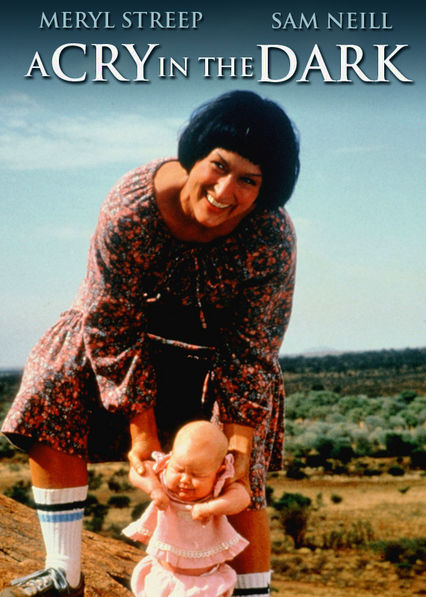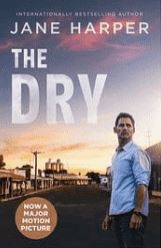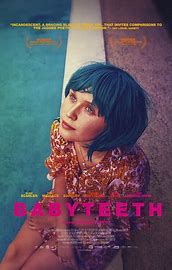Australian Stories
How are Australian stories structured in fictional and non-fictional media narratives?
Stories have always been a pivotal part of culture. Australian media is built on fictional and non-fictional stories that reflect our local, national and global cultural histories. Media creators and producers develop an individual style through the use and crafting of narrative and structures that engage different audiences and their interests.
Audience readings of meaning are mediated through a shared understanding of the media codes and conventions used to construct narratives in media products. The creation of narratives in media is contextual. Institutions and individuals involved at each stage of production constrain and shape narrative development in response to the cultural, institutional, economic, social and political constraints in which they work.
Factors including government regulation, finance and the economic sustainability of production play a part in the development and distribution of Australian narratives. These factors are most evident in fictional works, games, photography, print and non-fictional narratives such as news and current affairs, podcasts and advertising.
The voices and perspectives of Aboriginal and Torres Strait Islander creators and producers are an important element in the Australian media landscape. Through engagement with Aboriginal and Torres Strait Islander creators and texts, students develop respect for and recognition of the world’s oldest continuous living culture and understand the significant contribution of Australia’s First Peoples to the Australian media landscape, through both contemporary and historical media narratives and voices.
Students study a range of narratives in two or more media forms, exploring the context and features of their construction and how they are consumed and read by audiences. Narratives selected for study must be by Australian media creators and producers with primarily Australian content. At least one narrative must be from an Aboriginal and/or Torres Strait Islander creator or producer.
Key knowledge
- the structure of Australian fictional and non-fictional media stories arising from cultural histories and institutions
- media codes and conventions used to engage audiences and communicate meaning
- the influence of the style of media creators and producers in the construction of fictional and non-fictional narratives
- the impact of Aboriginal and Torres Strait Islander voices and perspectives on our national identity and story
- the impact of institutional, economic, social and political constraints on the production and distribution of fictional and non-fictional narratives
- how audience engagement and reception of narratives is affected by their expectation, consumption and prior reading of a range of fictional and non-fictional narratives in a range of contexts
- media language.
Key skills
- analyse structures in Australian fictional and non-fictional media stories arising from cultural histories and institutions
- analyse media codes and conventions used to engage audiences and communicate meaning
- analyse the construction of narratives through the fictional and non-fictional style of media creators and producers
- analyse the impact of Aboriginal and or Torres Strait Islander voices and perspectives on our national identity and story
- analyse the impact of institutional, economic, social and political constraints on the production and distribution of fictional and non-fictional narratives
- discuss factors that affect audience engagement and reception, such as consumption and prior reading of narratives in a range of contexts
- use media language.






INXS – Never Tear Us Apart
Never Tear Us Apart is the uncensored story of how six suburban boys from Australia conquered the world with a unique sound and work ethic that became legendary.
INXS: Never Tear Us Apart is a two-part Australian miniseries about the rock band INXS and was originally telecast on 9 February 2014, and concluded on 16 February 2014, produced by Shine Australia and airing on the Seven Network.
A Cry in the Dark
Based on the alleged death of two-month-old baby Azaria Chamberlain by a dingo in August of 1980 near Ayers Rock and the ensuing court case and media circus against her mother, Lindy (Meryl Streep), this 1988 film paints a haunting picture of hysteria.
The Dry
The Dry is a 2020 Australian Mystery Thriller Drama. The Dry is among the top ten highest-grossing film of 2020 in Australia with A$20.1 million. The film was due for release on 27 August 2020 but was delayed due to the Covid Pandemic.
Lion
Lion is a 2016 Australian biographical drama film directed by Garth Davis (in his feature debut) and written by Luke Davies, based on the non-fiction book A Long Way Home by Saroo Brierley. The film stars Dev Patel, Sunny Pawar, Rooney Mara, David Wenham and Nicole Kidman, and tells the true story of how Brierley, 25 years after being separated from his family in Burhanpur, sets out to find them.
The Dress Maker
The Dressmaker is a 2015 Australian comedy-drama film co-written and directed by Jocelyn Moorhouse, based on the 2000 novel of the same name by Rosalie Ham. It stars Kate Winslet as a femme fatale in the title role of the dressmaker, Myrtle “Tilly” Dunnage, who returns to a small Australian town to take care of her ailing, mentally unstable mother.
Baby Teeth
Babyteeth is a 2019 Australian coming-of-age comedy-drama film directed by Shannon Murphy from a screenplay by Rita Kalnejais, based upon her stage play of the same name. It stars Eliza Scanlen (in her first film appearance), Toby Wallace, Emily Barclay, Eugene Gilfedder, Essie Davis, and Ben Mendelsohn. The film had its world premiere at the Venice Film Festival on 4 September 2019. It was released in Australia on 23 July 2020 by Universal Pictures and won nine awards, including Best Film.
Australian Stories Questions
• What cultural histories arose in your mind after analysing the media texts studied in class?
• List the Australian representations that you noticed in the media texts you studied in class.
• What code and conventions were employed by the producers of each media text you studied in class?
• What impact on institutional, economic, social or political environments post the media text distribution?
• Discuss factors which impact on audience engagement and reception, such as consumption and prior reading of the narratives you studied in class.
Practice SAC Questions:
1. Australian stories arise from cultural and historical institutions. Outline the code and conventions employed in one of the media texts you watched in class. In your response, discuss how the code and conventions engaged the audience.
2. Compare the two texts and analyse the impact of the economic and political constraints on the production and distribution of each media product.
3. In the opening of both texts how was Australia represented? List the code and conventions employed by the creators to give audience meaning.
4. In one of the texts you studied in class discuss factors which impact on audience engagement and reception, such as consumption and prior readings of the narrative or characters.
Will Australia be first to force Netflix to make local content?
Article in The Age Newspaper, 6 May 2018 - By John McDuling
Could Australia be the first country in the world to impose a local content quota on Netflix? It's question being asked in media circles, and one that could soon be answered.
The Turnbull government commenced a review of support for the screen content sector nearly a year ago. That raised hopes within the film production community that streaming services such as Netflix and Stan (which is part owned by Fairfax Media, publisher of this column) could be forced to produce fixed amounts of Australian content, like their traditional TV rivals.
"There is more Australian content on the US Netflix library than there is on the Australian Netflix library," Screen Producers Australia said last week in a submission to a (entirely separate) review of digital platforms by the competition regulator.
The lobby group for independent production houses argues Netflix should face similar local content obligations to those imposed on traditional players (for free-to-air broadcasters, 55 per cent of shows aired between 6am and midnight must be Australian).
The problem is, imposing a quota on a free-to-air TV, channel, which is broadcasting 24 hours a day, is a very different thing to imposing a quota on a steaming service, which is viewed on demand.
The lobby group for independent production houses argues Netflix should face similar local content obligations to those imposed on traditional players (for free-to-air broadcasters, 55 per cent of shows aired between 6am and midnight must be Australian).
The problem is, imposing a quota on a free-to-air TV, channel, which is broadcasting 24 hours a day, is a very different thing to imposing a quota on a steaming service, which is viewed on demand.
Questions answered using your texts
QUESTION 1:
Question: Australian stories arise from cultural and historical institutions. Outline the code and conventions employed in one of the media texts you watched in class. In your response, discuss how the code and conventions engaged the audience.
- 8 marks -
Text = INXS – Never Tear Us Apart
Code = Acting – Luke Michael Hutchence.
Conventions = Story Arc & Point of View
Producers of Australian media are often recreating historical and cultural narratives that they know Australian audiences can relate too. The 2013 Mini Series, ‘INXS Never Tear Us Apart’ was produced and distributed for an Australian audience. This text, was affective in recreating the narrative of the famous band INXS and their rise to International fame. Acting, Story Arc and Point of View were employed by the producers to ensure the audience rode the journey of fame of the leading character and band member Michael Hutchence.
Luke Arnold represented the protagonist Michael Hutchence through his confidence, cheeky mannerisms. Luke’s tone of voice was deep and spiritual ensuring the audience could relate to his passion for writing musical lyrics. Luke would often be seen on screen bouncing around and dancing in a provocative manner, allowing the audience to connect with his character.
The narrative is presented from Michael’s point of view. This convention was effective in engaging the audience, as most Australian’s knew this character died before watching the mini series itself. By selecting his character to reflect the narrative’s point of view the audience can follow his creative journey and experience the highs and lows of his career.
Along side point of view, the band’s story arc is presented to the audience, using the following format; Exposition to Conflict to Rising and then falling Action and then to the final Resolution. Each component to this story arc is given attention to detail using various code and conventions. These are employed by the producer to ensure the audience relate to the emotions felt by the band, when they entered the music scene, to then having international fame and then finally the great loss of their lead singer.
QUESTION 2:
In another text you studied in class discuss factors which impact on audience engagement and reception, such as consumption and prior readings of the narrative or characters.
- 6 marks -
Producers of Australian media products understand that audiences receive and digest the narratives based on their prior knowledge of the storyline and or characters within the text. In order for media products to gain the recognition and creditability, creators ensure audience engagement and reception is given attention. This can be achieved by manipulating code and conventions according to the products genre or style.
A text such as, A Cry In The Dark (1988) was produced in Australia for an Australian audience. Director, Fred Schepisi was well aware that his audience understood and lived through the events that took place in 80’s involving that of Lindy and Michael Chamerlain. To ensure his audience’s prior readings of the narrative were met, Schepisi needed to cast his leads being particular in matching their expectations.
A good example of where this was evident was casting the role of Lindy. Meryl Streep, and although an American actress, was more than qualified to reveal the cold and man-like identity of Ms Chamberline. Each scene, Lindy’s character was often viewed by the audience wearing an unattractive and dower outfit. Her hair had sharp edges, leaving her look more manly than that of a mother of three children. These conventions when combined with the true events that took place in Uluru allowed the audience to be confused of her characters innocence.
QUESTION 3:
Compare the two texts and analyse the impact of the economic and political constraints on the production and distribution of each media product.
- 6 marks -
Audiences can gain an understanding of the economic and or political constraints placed on a text within the opening scene. It is obvious when a Hollywood blockbuster has been created and distributed to an audience. The lighting and sound is produced using the highest quality media equipment. Political constraints are not enforced and the laws are less restricted of that in which are placed on Australian media products. This occurs due to the Australian media laws and restrictions that are enforced to all Australian producers of media. Not only are Australians working with less budgets, we are also creating media texts for a different audience. The Australian audience is less forgiving, especially when comparing them with that of an American audience.
Two texts that demonstrate this are, Lion and A Cry In The Dark. Both true Australian stories, but produced for different audiences with different budgets. A Cry In The Dark is a text that was produced with minimal funding, and tight political constraints. Lion on the other hand was produced for an international audience, with less political and economical limitations. Therefore the filming and quality of story telling unfolded with more precision for a greater impact on a wider audience.
The distribution of each text is considered when constructing the initial budget. A Cry In The Dark for example was created for an Australian Television Network. In comparison to, Lion which was designed to be viewed in cinemas all around the world. The political and economic constraints are both so different for each of these locations. Each Australian Television Network has its own laws that are governed by the Australian Communication Media Authority. This is vastly different to that of the Blockbuster production.